Bid for Elton John’s watches as he says ‘Goodbye Peachtree Road’ at Christie’s
Our view? Elton John’s watches shimmer with poignancy and taste as the ‘Goodbye Peachtree Road’ auction at Christie’s New York reveals the contents of his Atlanta home

‘The Collection of Elton John: Goodbye Peachtree Road’ sale at Christie’s New York and online (until 28 February 2024) sees the contents of the singer-songwriter’s former Atlanta home up for auction, including a remarkable watch collection.
The superstar has a fond attachment to the city, where he located for a time to combat his addictions. He bought a condominium in Park Place, on Peachtree Road, in 1992 and has said that his time there played a critical part in his recovery.
'This extraordinary collection not only showcases a diverse array of remarkable objects that encapsulate Elton's unique life, work, and art but also provides our clients with a glimpse into the profound impact that the city of Atlanta had on him,' says Tash Perrin, deputy chairman, Christie’s Americas.
Here, we've picked out six exceptional designs from among Elton John’s watches, all part of the sale.
‘Goodbye Peachtree Road’: Elton John’s watches
The 1980s Cartier Piece Unique

Elton John's Cartier London Tank, circa 1980s
Considering it’s a 1980s design, this platinum, diamond and ruby baguette-set design by Cartier London is surprisingly, beautifully minimal. The Tank dial, with Roman numerals, is classic enough, but the baguette-cut rubies and diamonds that frame it add a luminous quality, as if the watch was made using little light-filled bricks. The overall effect is an incongruous industrial glamour, giving this platinum piece an entirely unique look. An atypical line of three white-diamond baguettes doubling up as lugs either side of the dial, also points to the fact that it was most probably a personal commission.

Elton John's Peachtree Road Atlanta home is under the hammer lock, stock and barrel
The 1990s Piaget Disco for the Wrist

The Piaget gem-set disco for the wrist
If you were Elton John in the 1990s, there's a good chance the decade’s pervading minimalism and dreary palette would bring you down a tad. The solution might be to create an emerald, sapphire, ruby and diamond disco for your wrist, so that every time you looked down (a lot in Elton’s case, as he’d most likely be practising at that piano 24/7), you’d get a brilliant burst of natural, gem-set joy. Piaget, the Swiss watchmaker and jeweller that has always understood that men like glamour too, was just the house to make the piece, its superlative craftsmanship in gold and gem-setting always falling on just the right side of elegant. The ruby baguette markers on the dial are all you need to see to know that this Piaget watch is a design apart.
The 1990s Vacheron Constantin Jalousie
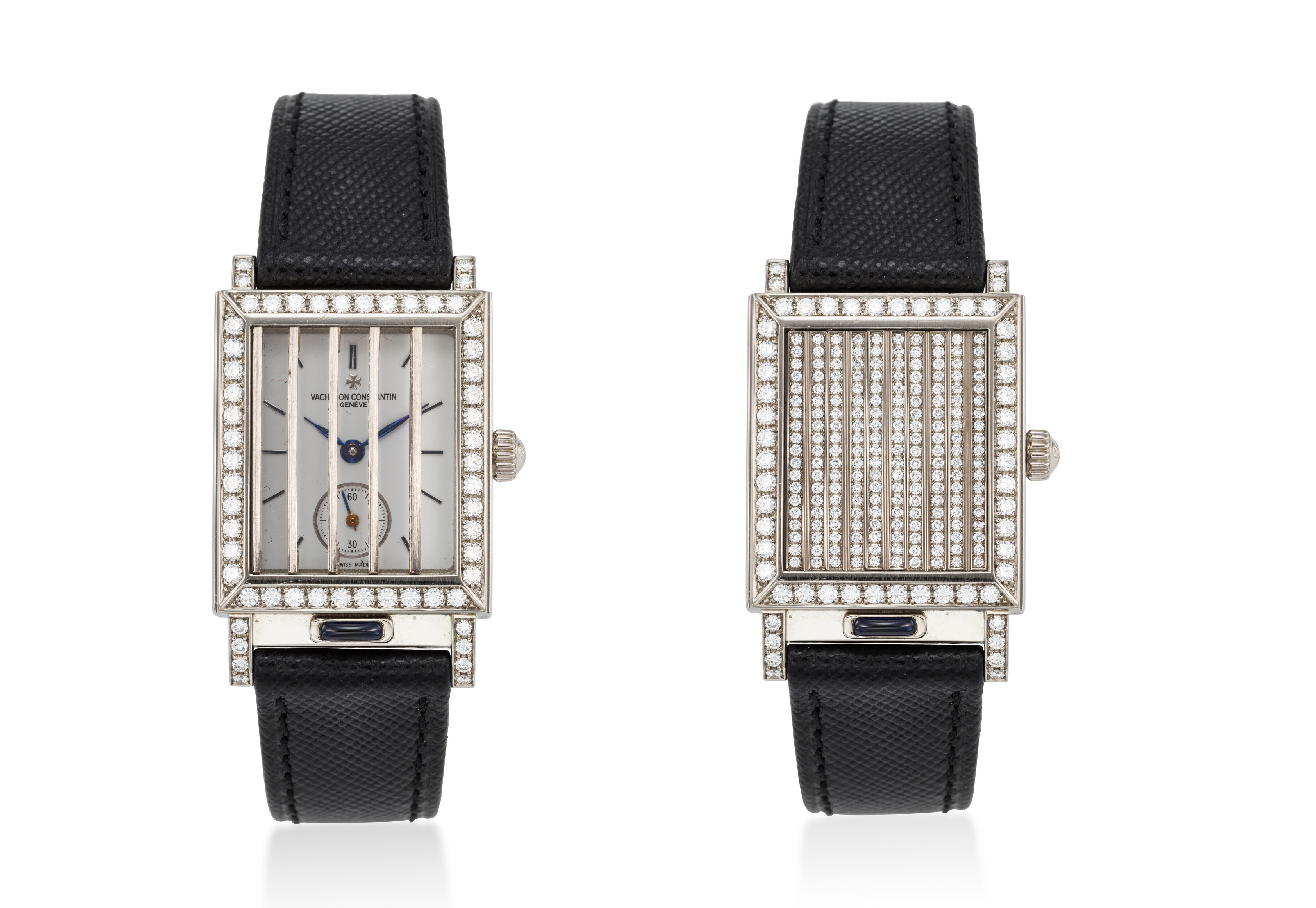
Elton John's Vacheron Constantin Les Historiques Jalousie
How can you not be intrigued by a watch named ‘Jealousy’. What does it even mean? Well, that jail-cell grille over the dial is, in fact, a shutter designed to be opened and closed (via the sapphire push button under the dial), as the wearer chooses, jealously guarding the dial, so to speak. Secret watches gained popularity in the 1920s, when it was deemed anti-social to check the time, for fear of seeming bored in company. Elton’s model has a diamond-set shutter, so that when it is closed, it looks like a shimmering, industrial tablet on the wrist. It's not dated but there was obviously someone possessed of supremely good taste at Vacheron in the 1990s, as that’s when the brand revisited the Jalousie design.
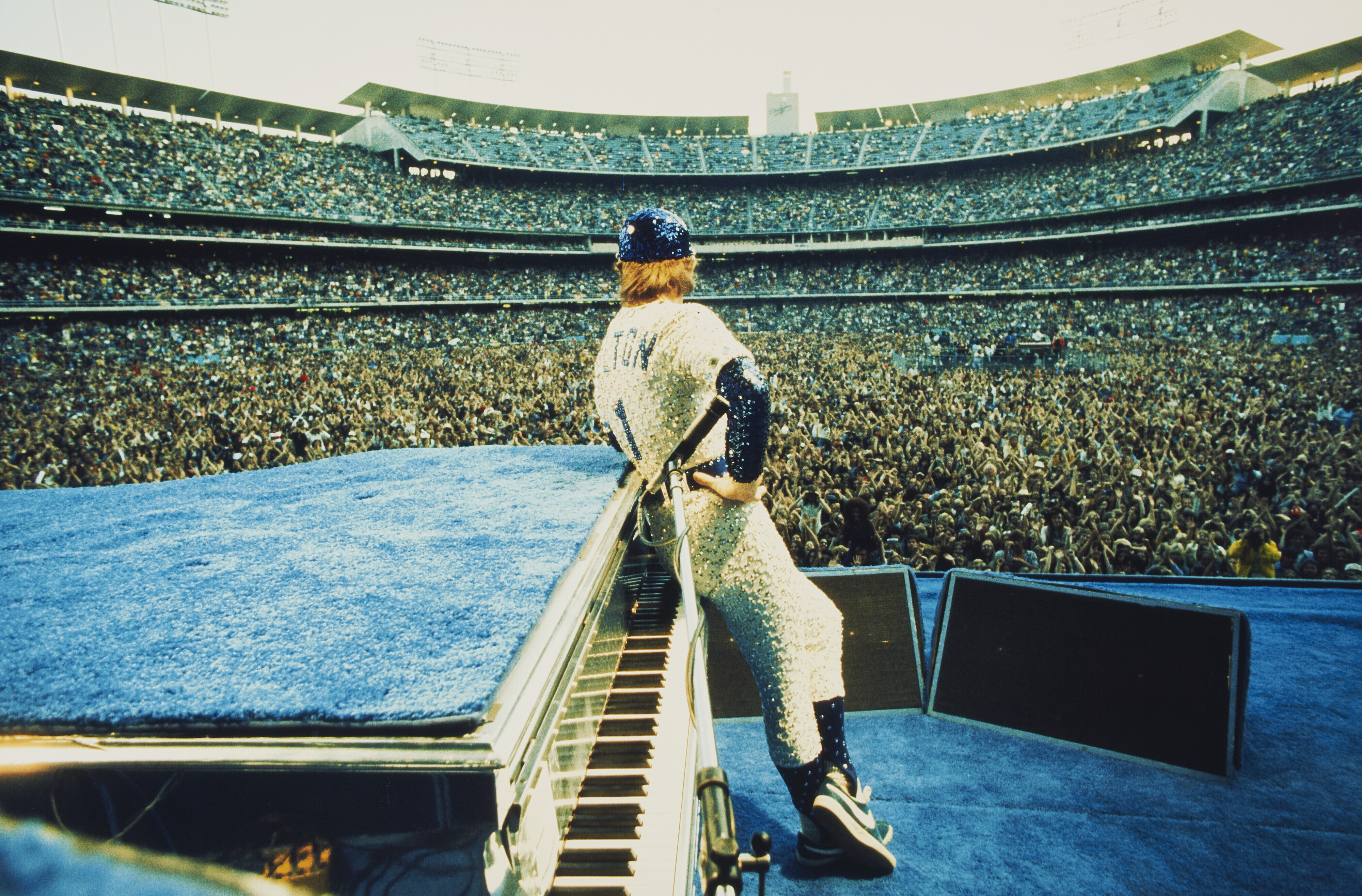
Elton John, live at Dodger's Stadium, 1975, by Terry O'Neill
The 2000s Rolex Lesser Spotted
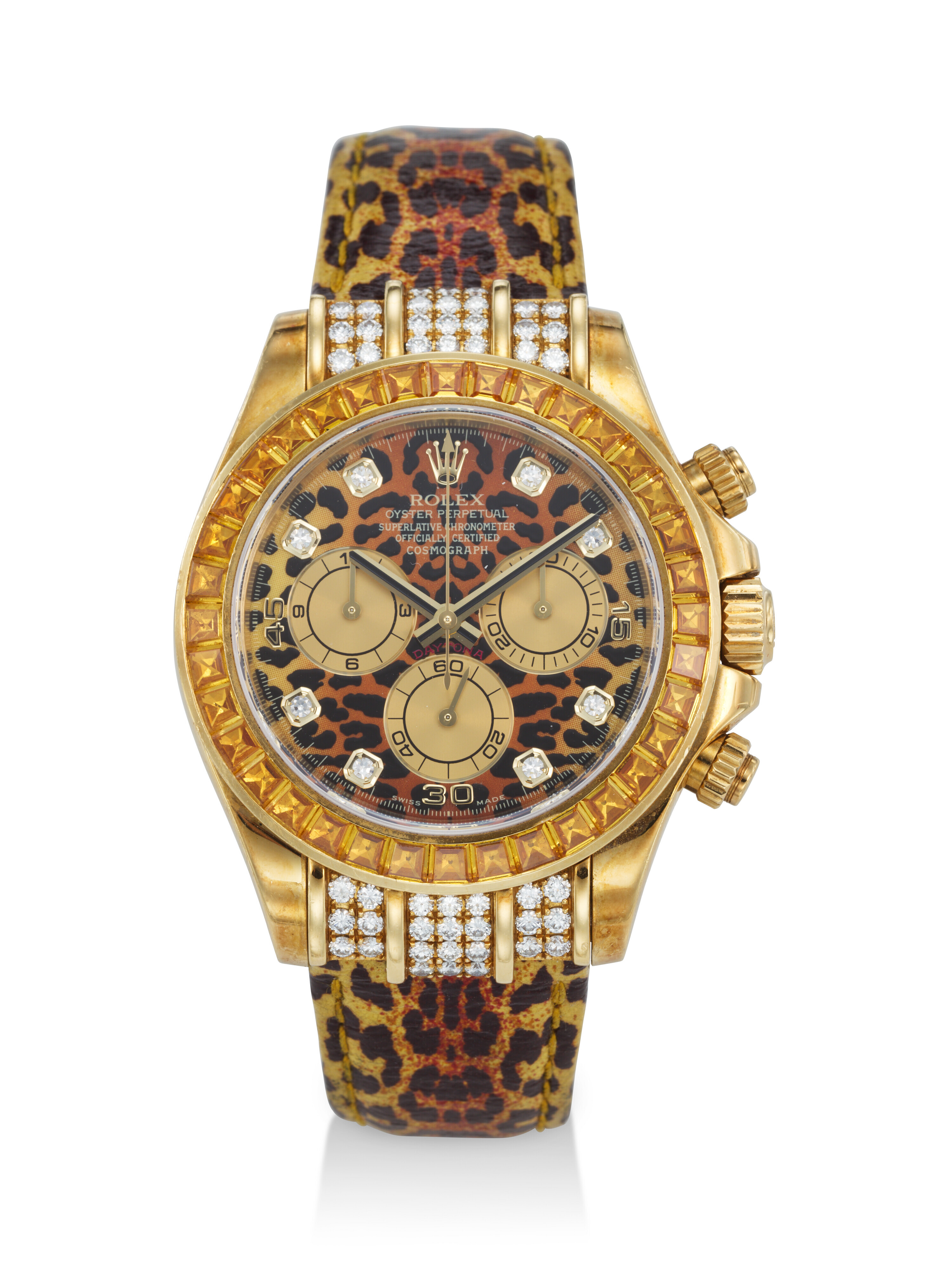
Elton John's rare Rolex, ‘leopard’ Daytona watch, circa 2001, was sold at the Christie’s auction’s opening night on 21 February 2024, for $176,400
It reached a whopping $176,400 against a reserve of $40,000 on the sale's opening night this week, so here's your chance to get a last look at the Elton John ‘leopard’ Daytona before its new owner pockets it. It's not the only one of its kind, however. ‘When the “leopard” appeared in 2003, it was a surprising leap for Rolex, a traditional manufacturer known for its timeless designs,' the Christie's team pointed out at the preview. The model, though, is super-interesting in that the run bears the ‘K’ serial number, dating it to 2001, a sign that even Rolex contemplated whether or not to release it initially, only deciding to give it a go two years later. Starring a showstopping bezel with 36 baguette-cut orange sapphires, and 48 brilliant-cut diamonds all over the place, its complicated provenance puts this Rolex design in a league of its own – a boon for any collector.

Inside Elton John’s Peachtree Road penthouse, Atlanta
The 2000s Cartier Anything But Normale
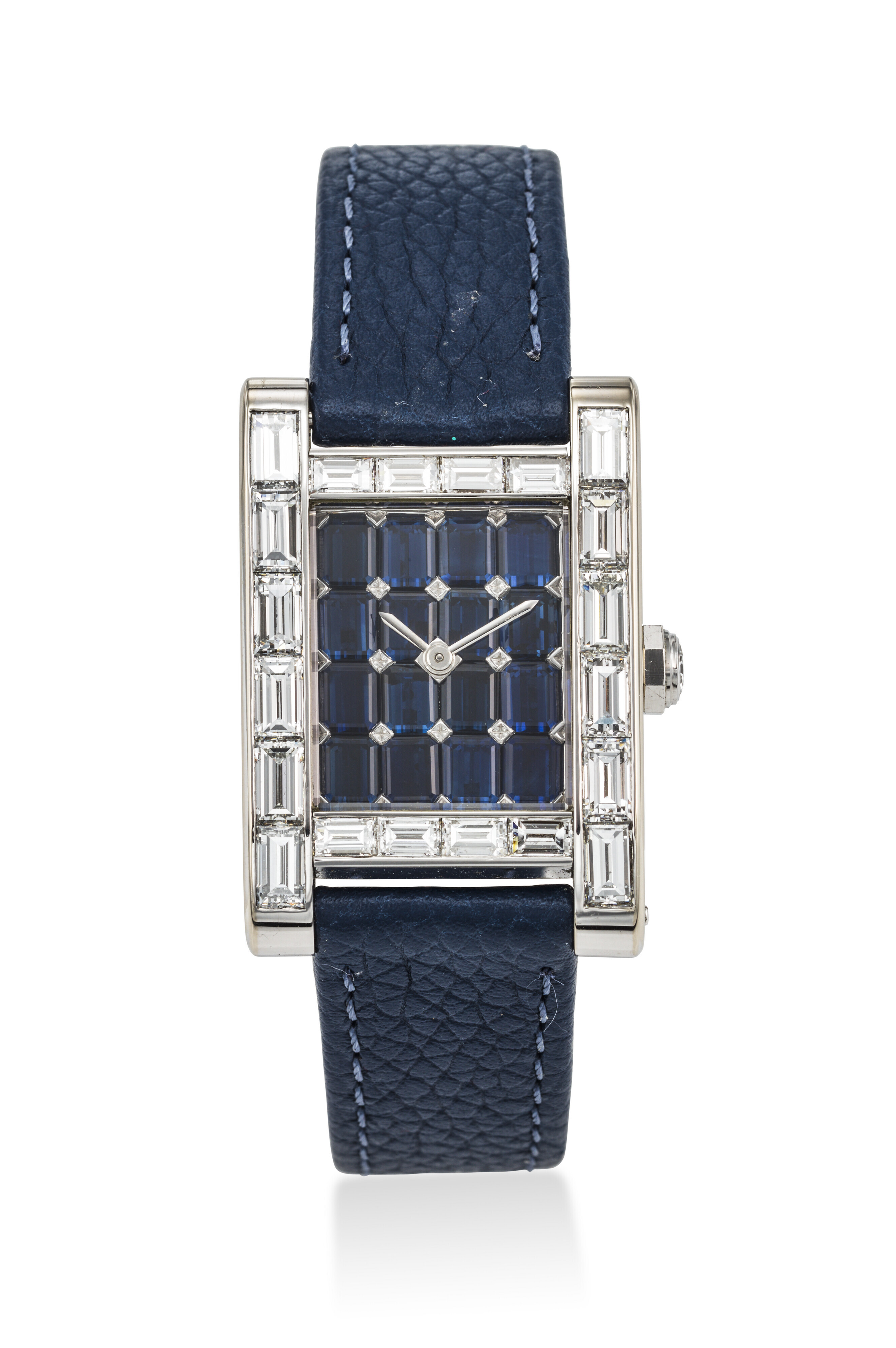
Elton John's Cartier Paris Tank Normale, with 20 baguette-cut diamonds and 16 invisible-set baguette-cut blue sapphires on the dial sold this week for $176,400, almost nine times its estimate
Just look at the way these deep-blue sapphires seem to have floated into place on the white-gold dial, and check out the octagonal bolt-like crown set with a round diamond. The Tank Normale first appeared in 1919, and the French jeweller renewed its focus on this classic Machine Age design last year. Elton's sold this week, on 21 February, for $176,400, almost nine times its estimate of $20,000, and set another record for the Cartier Normale model, which rarely comes up at auction. 'It was the one we were most excited to [see] come up,' the Christie's sale team admitted, 'because it's anything but normale.'

Elton John at the piano performing a handstand, captured by Terry O'Neill
The 2010s Hublot Big Bang Bashed About

Elton John’s Hublot Big Bang titanium and ceramic watch
Hublot watches were born to be big, brash and tough. Today, they are associated with Premier League Football but back in the 2010s, when this model was produced, the Big Bang, Hublot's hero design, had a slimmer profile and a less obviously big-guy aesthetic. At the time, you could wear this titanium and ceramic all-black number with a sleeveless black Prada dress and it looked right. Even the date is matte black enough to be almost irrelevant. But what makes this Big Bang particularly compelling is that it is so obviously well worn, elevating it above collector value to priceless, social-history status.
‘The Collection of Elton John: Goodbye Peachtree Road’ is at Christie’s New York, until 28 February, christies.com
As part of it, ‘The Day Sale’ live auction runs 22 and 23 February
Receive our daily digest of inspiration, escapism and design stories from around the world direct to your inbox.
Caragh McKay is a contributing editor at Wallpaper* and was watches & jewellery director at the magazine between 2011 and 2019. Caragh’s current remit is cross-cultural and her recent stories include the curious tale of how Muhammad Ali met his poetic match in Robert Burns and how a Martin Scorsese Martin film revived a forgotten Osage art.
-
 A tale of two Audis: the A5 saloon goes up against the A6 Avant e-tron
A tale of two Audis: the A5 saloon goes up against the A6 Avant e-tronIs the sun setting on Audi’s ICE era, or does the company’s e-tron technology still need to improve?
-
 Inside Christian de Portzamparc’s showstopping House of Dior Beijing: ‘sculptural, structural, alive’
Inside Christian de Portzamparc’s showstopping House of Dior Beijing: ‘sculptural, structural, alive’Daven Wu travels to Beijing to discover Dior’s dramatic new store, a vast temple to fashion that translates haute couture into architectural form
-
 A music player for the mindful, Sleevenote shuns streaming in favour of focused listening
A music player for the mindful, Sleevenote shuns streaming in favour of focused listeningDevised by musician Tom Vek, Sleevenote is a new music player that places artist intent and the lost art of record collecting at the forefront of the experience
-
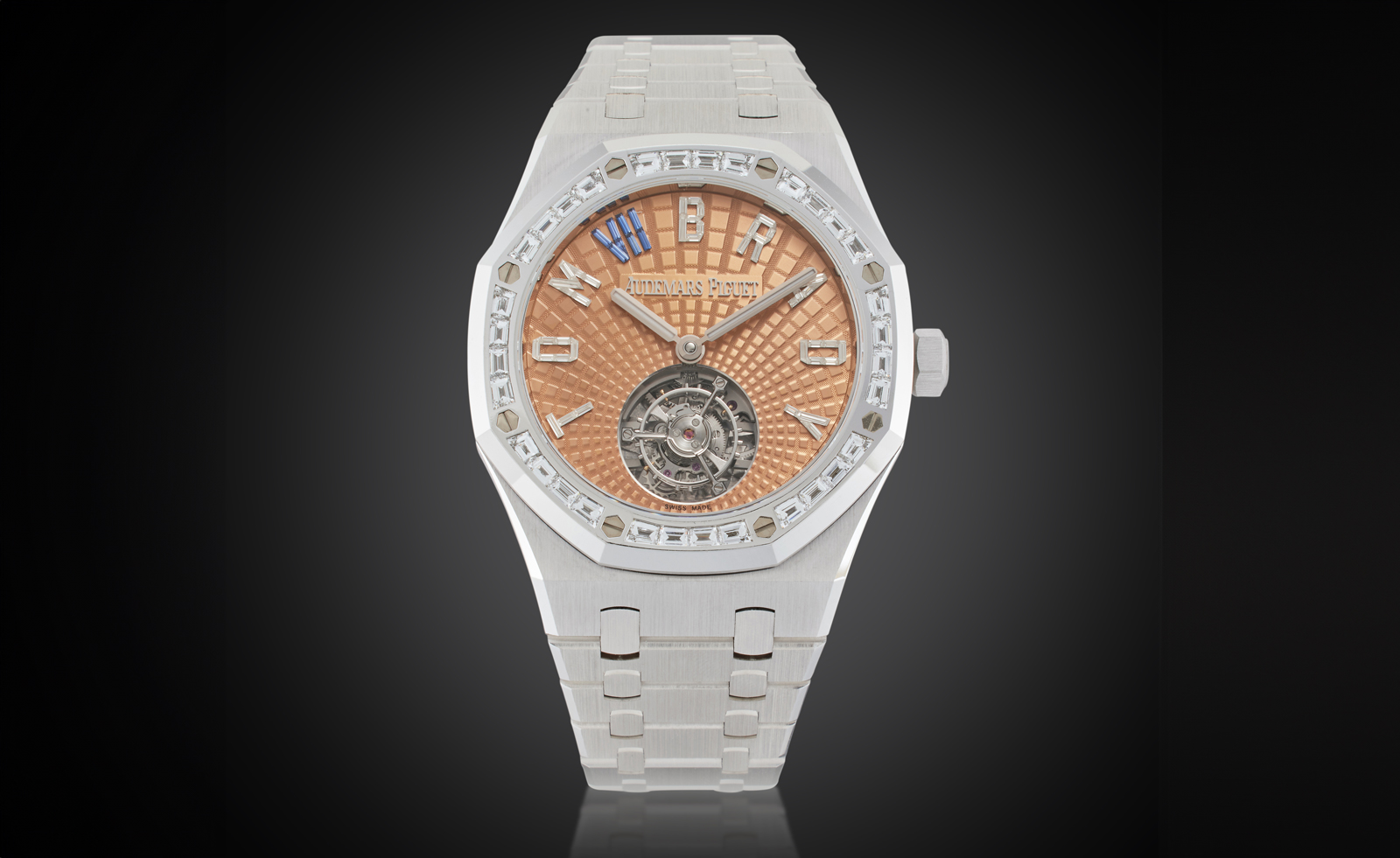 Tom Brady’s watch collection is for sale at Sotheby’s: here are the highlights
Tom Brady’s watch collection is for sale at Sotheby’s: here are the highlights‘The GOAT Collection: Watches & Treasures from Tom Brady’ goes on sale at Sotheby’s New York on 10 December
-
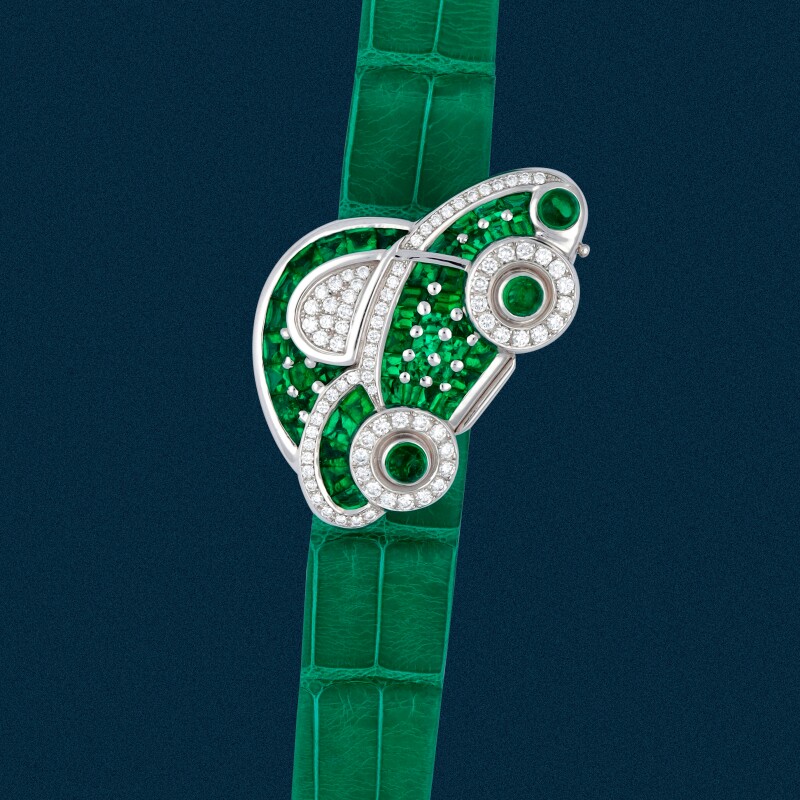 Sotheby’s vintage watch sale of 24 spectacular avant-garde designs sells out in one hour
Sotheby’s vintage watch sale of 24 spectacular avant-garde designs sells out in one hourPatek Philppe's crazy-paved cuff and Audemars Piguet's emerald car are the star lots, pointing towards a new era of idiosyncratic opulence in watch design
-
 A treasure trove of Freddie Mercury’s personal effects goes under the hammer
A treasure trove of Freddie Mercury’s personal effects goes under the hammerAhead of Sotheby’s Freddie Mercury auction, the eclectic collection of 1,200 lots, including one-off jewellery pieces, is on show in London
-
 Vast Swatch auction includes collaborations with Keith Haring, Philip Glass and Vivienne Westwood
Vast Swatch auction includes collaborations with Keith Haring, Philip Glass and Vivienne WestwoodLAMA’s Swatch auction of artist Esther Montagner’s collection sees over 600 pieces go under the hammer
-
 Watches, jewellery and art go under the hammer at Phillips Asia
Watches, jewellery and art go under the hammer at Phillips AsiaDigital ‘Refresh: Reload’ auction unites disciplines for the first time
-
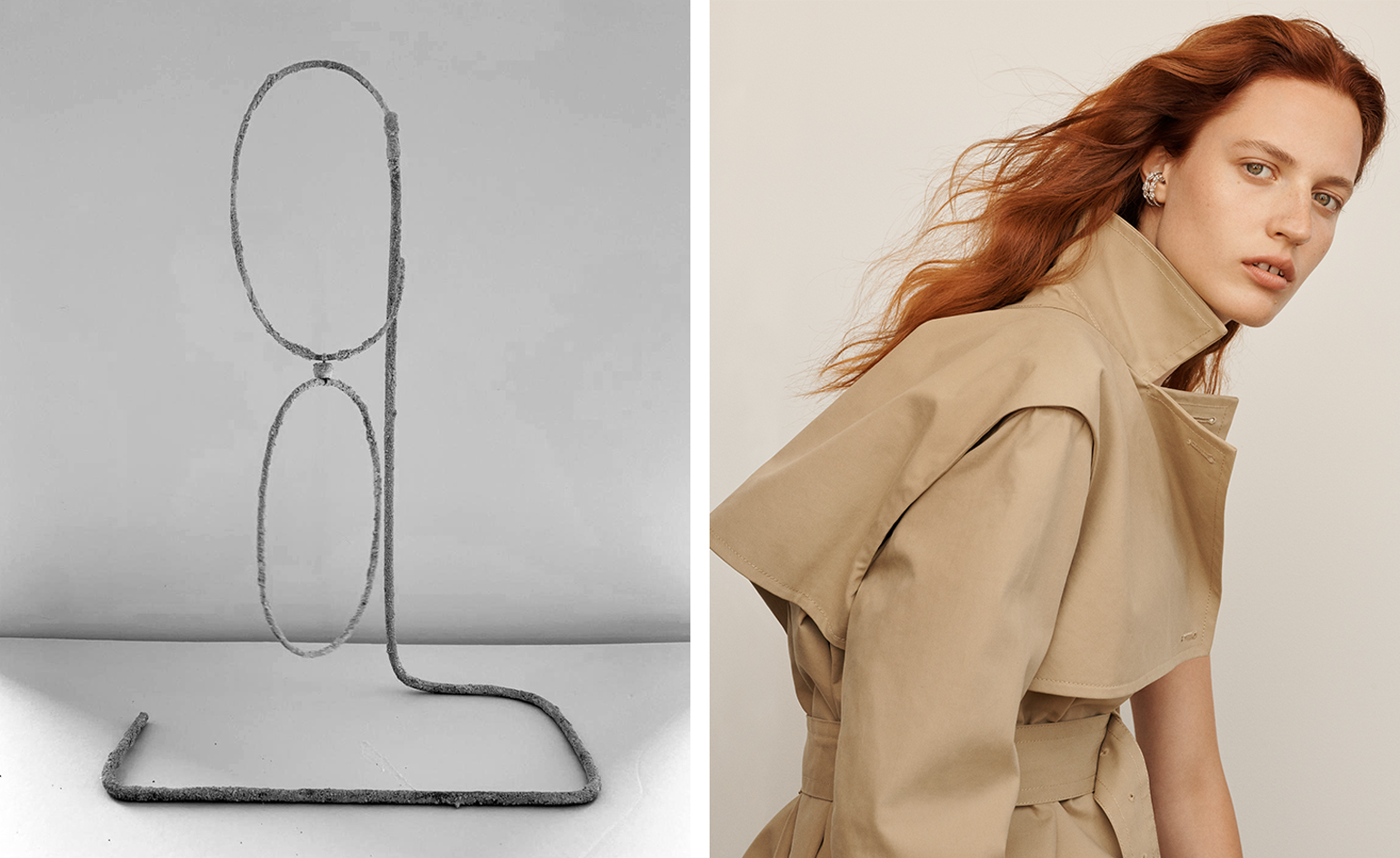 Chain reaction: sculpture and jewellery interconnect as Ana Khouri’s designs go on show at Phillips, London
Chain reaction: sculpture and jewellery interconnect as Ana Khouri’s designs go on show at Phillips, London